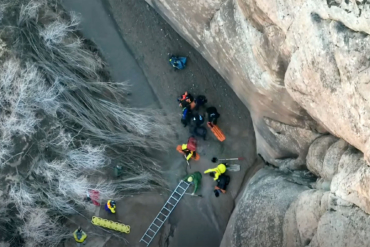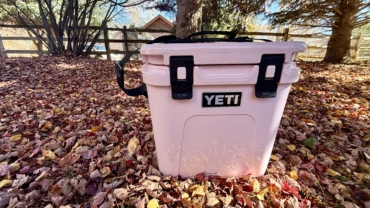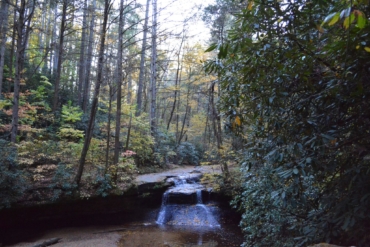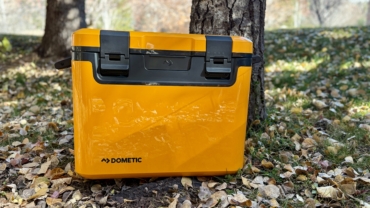Everyone knows about Half Dome in Yosemite — but have you heard of the bubbling geothermal hot spots of Lassen? Or the talus caves in Pinnacles National Park?
My boyfriend and I have spent months on the road for the past four summers visiting all of our favorite places and seeing new parts each time. I have backpacked in five of the nine California national parks and day-hiked in each. They all have extremely unique things to see, beautiful places to go, and a lot that visitors should know.
This guide will briefly cover each park, the best time to visit, where to get permits, and my top three favorite things to do in each one.
Here are nine California national parks, listed in order from the least known to the most popular.
Editor’s note: Be aware that California wildfires are frequent in the dry season (summer) and dangerous. Doing any outdoor activity in smoke can be harmful to your health. Always check with the National Park Service for any alerts related to wildfire-related closures in California.
All 9 California National Parks
1. Lassen Volcanic National Park

Located in Northern California, this national park offers hiking, camping, backpacking, and boating. The 30-mile scenic drive connects the two visitor centers, Loomis Museum by the northwest entrance and Kohm Yah-mah-nee by the southwest entrance.
Lassen Volcanic National Park permits and reservations: Reservations are required for group campsites and access to stock corrals. Permits are required for backcountry camping and stock use.
When to go: Summer is the time to hike, backpack, camp, swim, and more. The park is open in the winter for snowshoeing, backcountry skiing, and snowboarding, but with limited amenities and accessibility.

Top 3 Things to Do in Lassen Volcanic Park
- Hike to Bumpass Hell, the largest geothermal area in the park. The trailhead is right across from Lassen Peak’s trailhead. It’s the largest plug dome volcano in the world.
- Visit Manzanita Lake, the most convenient lake for all summer activities.
- Drive to Butte Lake, hike the Cinder Cone trail, and see the Fantastic Lava Beds.
2. Pinnacles National Park

Located in Central California, this park has climbing routes, hiking trails, bird-watching opportunities, and even caves to hike through. There are two entrances (east and west), two visitor centers on each side, and one campground on the east. Both sides connect with hiking trails instead of roads.
Pinnacles National Park permits and reservations: No advance permits are required to enter Pinnacles National Park. Reservations for the campground can be made here.
When to go: For the most enjoyable experience, visit between September and May. The summer heat can be overwhelming and even dangerous.
Top 3 Things to Do in Pinnacles National Park
- Hike the High Peaks Trail for views of the park and sections of trail built into the rock.
- Hike through Bear Gulch Cave on the east side. Remember to bring your headlamp.
- Watch for California condors, the largest land bird in North America. Pinnacles joined the California Condor Recovery Program in 2003.
3. Channel Islands National Park

Located in Southern California, the five islands that make up this park are San Miguel, Santa Rosa, Santa Cruz, Anacapa, and Santa Barbara. Reserve a private boat or a public, national park-authorized boat to get there. Stay for a day to hike, snorkel, sail, or sea kayak. Stay for a few days to make the most of your visit.
Channel Islands National Park permits and reservations: Advance camping reservations are required for all front-country campgrounds. No permits are required to land boats on the islands, but a landing permit is required to land on The Nature Conservancy (TNC) on Santa Cruz Island.
When to go: This park is open year-round for you to enjoy, but boat rides are less frequent in the cooler months.
Top 3 Things to Do in Channel Islands National Park
- Hike to Potato Harbor and Cavern Point on Santa Cruz Island.
- Sea kayak below the cliffs, into private inlets, and around sea caves.
- Enjoy the wildlife. The island foxes and island scrub jays can only be seen in this park. Hopefully, you see some dolphins or whales on your boat ride.
4. Death Valley National Park

Located in Eastern California, this park is known for its record-breaking temperature on the surface of Earth of 134 degrees Fahrenheit (56.6 degrees Celsius), as well as the lowest elevation in North America of 282 feet (86 m) below sea level.
Furnace Creek Visitor Center should be your first stop along Highway 190, the main road going through the park from east to west, to pick up maps, ask questions, and fill up on water.
This park had a major flash flood in August 2022 that affected many of the roads, so please check the road conditions and closures before visiting.
Death Valley National Park permits and reservations: Backcountry/Wilderness permits are required for some locations and are voluntary (but highly recommended) for other locations. Check the website’s list of where you’ll need them.
When to go: To experience the heat, visit during the summer — but be careful. Take short visits to viewpoints, drive scenic drives, and watch sunrise or sunset. Visiting in the cooler months will be comfortable enough to hike and explore more.
Top 3 Things to Do in Death Valley National Park
- Visit Badwater Basin, the lowest point in North America.
- Drive the scenic road, Artist Drive, to see the multicolored hills.
- Enjoy the quarter-mile (0.4km) hike to the top of Zabriskie Point for spectacular views of the valley from above.
5. Joshua Tree National Park

Located in Southern California, this park is known for its Joshua trees and massive boulders to scramble and climb. There are three visitor centers connected by Park Boulevard: Joshua Tree by the northwest entrance, Oasis by the northeast entrance, and Cottonwood by the south entrance.
Joshua Tree National Park permits and reservations: No reservations are required to enter the park. Some campgrounds are first come, first served, while others require a reservation.
When to go: The more moderate seasons are the best time to visit. If you visit in the summer, remember to bring plenty of water and fill up the car with gas before entering. You won’t find much of either once you enter the park, and you’ll need plenty of both.
Top 3 Things to Do in Joshua Tree National Park
- Hike the 1-mile (1.6km) Hidden Valley loop in the heart of the park and have a picnic there.
- Take a short walk through the Cholla Cactus Garden.
- Enjoy the seasonal hike to the Fortynine Palms Oasis Trail in the northern part of the park. It’s closed in the summer so bighorn sheep can access the water without disturbance.
6. Redwood National Park

Located along the Northern California coast, this national park is known for the tallest trees in the world. Enjoy short walks, bicycle rides, hikes of various lengths, backpacking trips, and more.
This park connects with three California state parks and has five visitor centers: Thomas H. Kuchel in the south, Prairie Creek right by the Newton B. Drury Scenic Parkway, Hiouchi and Jedidiah Smith in the north, and the Park Headquarters in Crescent City.
Redwood National Park permits and reservations: Tall Trees Trailhead and the Gold Bluffs Beach Day Use Area require free permits. Permits are required to camp at all backcountry camping spots and reservations must be made for all front-country campgrounds at ReserveCalifornia at least 2 days in advance.
When to go: This park is open year-round. The coastal location brings milder temperatures. Remember a raincoat during the cooler months.
Top 3 Things to Do in Redwood National Park
- Hike from Prairie Creek Visitor Center to Gold Bluffs Beach on the Miners Ridge-James Irvine Trail. Include Fern Canyon, if you have the permit (required during the summer).
- Drive the Newton B. Drury Scenic Parkway and take a short walk to the Big Tree Wayside.
- Drive Howland Hill Road by Crescent City and take a short walk to Stout Grove or a longer hike on the Boy Scout Tree Trail.
7. Kings Canyon National Park

Located in the Sierra Nevada mountains and connected to Sequoia National Park by the California Generals Highway, this park is known for massive trees, the Kings River, granite canyon walls, and one of the best backpacking loops, mentioned below.
There are two visitor centers: one in Grant Grove Village along Generals Highway and the other in Cedar Grove, toward the end of the Kings Canyon Scenic Byway.
Kings Canyon National Park permits and reservations: Outside of “quota season,” wilderness permits are free, self-issued, and not limited to daily entry quotas. During quota season, the number of people is limited by entry point, and there is a recreation fee.
When to go: Summer is the most popular time to visit, but you can snowshoe, cross-country ski, and backcountry ski in the winter. There are seasonal amenities.
Top 3 Things to Do in Kings Canyon National Park
- Visit General Grant, the second-largest tree in the world, and walk among other humongous sequoias.
- Drive the Kings Canyon Scenic Byway. Visit Roaring River Falls and Zumwalt Meadow. For a longer hike, visit Mist Falls.
- Go backpacking. Get a permit for Rae Lakes Loop in advance and enjoy this 42-mile loop that overlaps with parts of the Pacific Crest Trail and the John Muir Trail.
8. Sequoia National Park

Located in the Southern Sierra Nevada mountains and connected to Kings Canyon National Park by Generals Highway, this national park is known for General Sherman, the largest tree in the world by volume.
There are three visitor centers: Foothills in the southern part of the park along Generals Highway, Giant Forest Museum in the heart of the park, and Lodgepole in the northern part of the park.
Sequoia National Park permits and reservations: Outside of “quota season,” wilderness permits are free, self-issued, and not limited to daily entry quotas. The number of people during quota season is limited by entry point. Also, there is a recreation fee.
When to go: This California national park is most active during the summer. But if you prepare with snow tires and chains, the winter is a fun time to snowshoe, sled, and cross-country ski.

Top 3 Things to Do in Sequoia National Park
- Walk around General Sherman, the world’s largest tree measured by volume. The Big Trees Trail is also a good loop.
- Shuttle to Moro Rock, a short but steep hike with expansive views.
- Shuttle to Crescent Meadow. If you hike up just a mile on the High Sierra Trail, you’ll get a beautiful view of the mountains in the distance, like Moro Rock. The Tunnel Log is also on that road.
9. Yosemite National Park

Located in East Central California, this national park is one of the most well-known parks in the entire National Park System. Half Dome, El Capitan, Yosemite Valley, Cathedral Lakes, Tuolumne Meadows, John Muir Trail, Pacific Crest Trail, and Yosemite Falls are all here, and there’s plenty more to see.
There are four visitor centers: The main visitor center is in Yosemite Valley, the seasonal Wawona is in the south part of the park, the seasonal Tuolumne Meadows is along the seasonal Tioga Road, and the seasonal Mono Basin Scenic Area is even farther east, along route 395, outside the park.
Yosemite National Park permits and reservations: There is an entrance fee for Yosemite, but you don’t need a reservation or permit to visit the park. If you plan on camping, though, definitely get a reservation ahead of time.
When to go: Summer is most popular for climbing, hiking, camping, backpacking, biking, and more. Check out Badger Pass for cross-country skiing, snowshoeing, and even downhill skiing and snowboarding.
Top 3 Things to Do in Yosemite National Park
- Borrow a bike for free thanks to Peet’s Coffee and the Yosemite Nature Conservancy’s bike-share program.
- See the waterfalls. Take a short walk to Lower Yosemite Falls, or for something longer, hike the Mist Trail to Vernal Falls and Nevada Falls.
- Watch the sunset from Cooks Meadow or Glacier Point (an hour away from Yosemite Valley) and get a stunning view of the lighting change on Half Dome.








